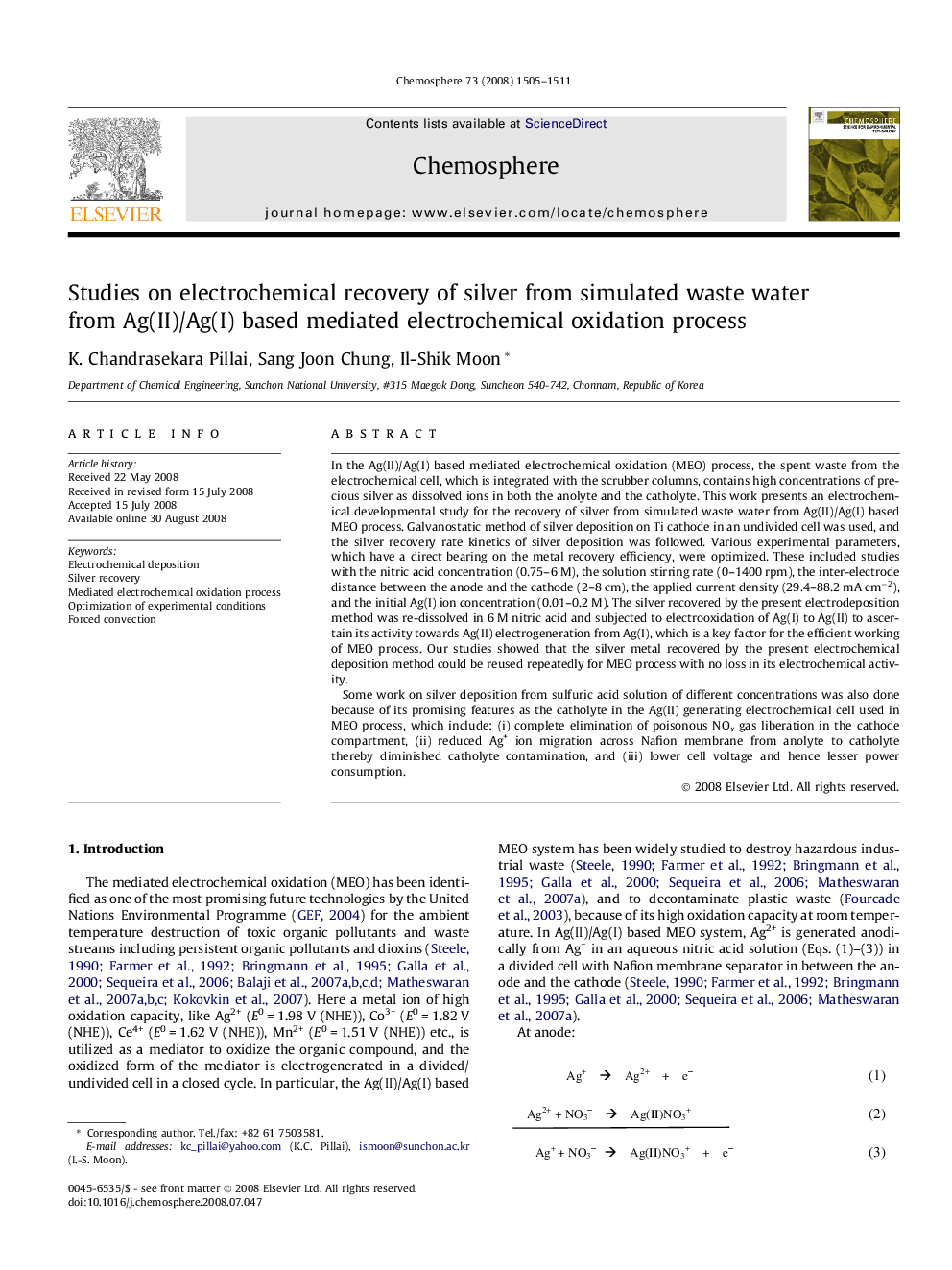| کد مقاله | کد نشریه | سال انتشار | مقاله انگلیسی | نسخه تمام متن |
|---|---|---|---|---|
| 4412903 | 1307656 | 2008 | 7 صفحه PDF | دانلود رایگان |

In the Ag(II)/Ag(I) based mediated electrochemical oxidation (MEO) process, the spent waste from the electrochemical cell, which is integrated with the scrubber columns, contains high concentrations of precious silver as dissolved ions in both the anolyte and the catholyte. This work presents an electrochemical developmental study for the recovery of silver from simulated waste water from Ag(II)/Ag(I) based MEO process. Galvanostatic method of silver deposition on Ti cathode in an undivided cell was used, and the silver recovery rate kinetics of silver deposition was followed. Various experimental parameters, which have a direct bearing on the metal recovery efficiency, were optimized. These included studies with the nitric acid concentration (0.75–6 M), the solution stirring rate (0–1400 rpm), the inter-electrode distance between the anode and the cathode (2–8 cm), the applied current density (29.4–88.2 mA cm−2), and the initial Ag(I) ion concentration (0.01–0.2 M). The silver recovered by the present electrodeposition method was re-dissolved in 6 M nitric acid and subjected to electrooxidation of Ag(I) to Ag(II) to ascertain its activity towards Ag(II) electrogeneration from Ag(I), which is a key factor for the efficient working of MEO process. Our studies showed that the silver metal recovered by the present electrochemical deposition method could be reused repeatedly for MEO process with no loss in its electrochemical activity.Some work on silver deposition from sulfuric acid solution of different concentrations was also done because of its promising features as the catholyte in the Ag(II) generating electrochemical cell used in MEO process, which include: (i) complete elimination of poisonous NOx gas liberation in the cathode compartment, (ii) reduced Ag+ ion migration across Nafion membrane from anolyte to catholyte thereby diminished catholyte contamination, and (iii) lower cell voltage and hence lesser power consumption.
Journal: Chemosphere - Volume 73, Issue 9, November 2008, Pages 1505–1511